Nuevo Laredo, Tamaulipas 作者: 来源: 发布时间:2021-07-23
1.Population and Area
Pop: 373,725
Area: 1,334 km2 (city)
Elev: 211 masl
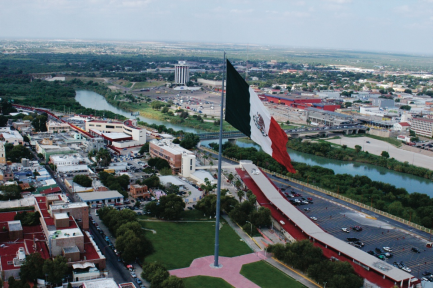
2. Natural geography
Nature and weather
Nuevo Laredo is in the northern tip of Tamaulipas on the west end of the Rio Grande Plains. Rio Grande is the only source that supplies its citizens with water. El Coyote Creek supplies Nuevo Laredo's only natural lake El Laguito (The Small Lake).
The flora consists of forage grasses, salty grasses, bougainvillea, walnut, oak, windbreaker, river willow, cacti of different types and mainly shrubs but there are also some large foliage trees mainly on the river banks. The soil of Nuevo Laredo has under its tributary crust presumably linked to the current of the Rio Bravo that sometimes forms artificial lakes such as the Laguito formed by the coyote stream, other important streams are the sorrels, as well as the Estero Reventado, El Abandonado, La Sandra, el Ortillo, el Carrizo. Black waters, The Government, the Ramireño and the Cedena. To the west of the Municipality there is a great variety of wild fauna, considered as minor, composed of the coyote, deer, quail and pigeon, it is very common to find the Wild Boar, and White-tailed Deer that is attracted by the greenness of the river bank.
Köppen Classification: Mid-Latitude Steppe and Desert Climate
This climate type is characterized by extremely variable temperature conditions, with annual means decreasing and annual ranges increasing poleward, and relatively little precipitation. This climate is typically located deep within the interiors of continents and is contiguous with the tropical desert climates of North and South America and of central Asia. This region type owes its origins to locations deep within continental interiors, far from the windward coasts and sources of moist, maritime air. Remoteness from sources of water vapor is enhanced in some regions by mountain barriers upwind.
The Köppen Climate Classification subtype for this climate is "Bsh". (Mid-Latitude Steppe and Desert Climate).
The average temperature for the year in Nuevo Laredo is 73.0°F (22.8°C). The warmest month, on average, is July with an average temperature of 87.6°F (30.9°C). The coolest month on average is January, with an average temperature of 54.0°F (12.2°C).
The highest recorded temperature in Nuevo Laredo is 120.2°F (49°C), which was recorded in June. The lowest recorded temperature in Nuevo Laredo is 14.0°F (-10°C), which was recorded in December.
The average amount of precipitation for the year in Nuevo Laredo is 20.8" (528.3 mm). The month with the most precipitation on average is September with 3.1" (78.7 mm) of precipitation. The month with the least precipitation on average is March with an average of 0.6" (15.2 mm). In terms of liquid precipitation, there are an average of 45.4 days of rain, with the most rain occurring in September with 5.5 days of rain, and the least rain occurring in March with 2.5 days of rain.
Getting there and around
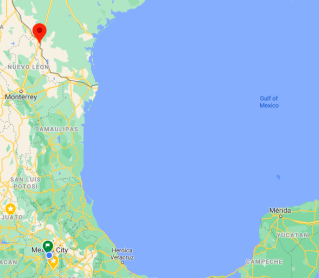
Get there
By plane
Quetzalcóatl International Airport (IPA: [ketsalˈkoː.aːtɬ] NLD IATA). is an international airport in Nuevo Laredo, Tamaulipas, Mexico. It is near the U.S.-Mexico border border that handles national and international air traffic for the city of Nuevo Laredo. Four daily direct flights to and from Mexico City are available.
Laredo International Airport (LRD IATA) is a public airport 3 mi (4.8 km) northeast of Nuevo Laredo in Laredo, Texas. The airport has scheduled direct flights to Dallas/Fort Worth (80 minutes) and Houston (80 minutes) and Las Vegas (165 minutes) via American Eagle, United Express, Allegiant.
By car
From Mexico
Mexican Federal Highway 2 (Mex Dos) starts at the international dam at Lake Amistad near Ciudad Acuña, Coahuila and runs through Piedras Negras, Colombia (Nuevo Leon), Nuevo Laredo Reynosa, and ends near Matamoros, Tamaulipas.
Mexican Federal Highway 85 starts in Nuevo Laredo and runs through Monterrey, Nuevo León, Ciudad Victoria, Tamaulipas, Ciudad Valles, San Luis Potosí, and Pachuca, Hidalgo. It ends in Mexico City.
Tamaulipas / Nuevo Leon State Highway 1 starts in Colombia, NL at Bridge 4 and ends in Monterrey.
From the United States
There are three bridges that connect Nuevo Laredo to Laredo, Texas for private vehicles: If you are driving, you will have the option of crossing Bridges 1, 2, or 4. If you are on foot, you will have to use Bridge 1.
Bridge 1 is accessed from Downtown Laredo and will connect you directly to Downtown Nuevo Laredo.
Bridge 2 is at the end of I-35 and connects with Blvd. Colosio in Mexico. If you are not stopping in Nuevo Laredo, or are simply not heading downtown, Bridge 2 is often the most seamless option.
Bridge 3 is the "International Commerce Bridge" and used only by trucks.
Bridge 4 is about 20 km out of Laredo and crosses at Colombia, Nuevo Leon, a different state from Nuevo Laredo. While Colombia is an interesting small village, that particular bridge is a rather out of the way option if you are bound for Nuevo Laredo.
Getting into Mexico is generally pretty quick regardless of the bridge you use. All three bridges cost US$3 to cross going into Mexico, payable in US dollars or Mexican pesos (M$). You will notice a different road surface when you pass the border plaque on the bridge.
By bus
US and Canada. Buses go to Laredo frequently, connecting Nuevo Laredo with the Greyhound Network and all points further north. Bookings can be made online. Passengers heading north by bus might consider purchasing a travel pass for unlimited travel on Greyhound within a 7, 15, or 30 day period. There are also a number of other lines that travel to points in Texas, Florida, and Illinois.
Mexico City. Buses leave for Mexico City frequently with Grupo Senda. Bookings can be made online.
Monterrey. Direct buses to Monterrey run as low as M$200 and take about 3 hours.
Car Rental – To explore Mexico’s provincial towns and cities—including its beach locations and the scenery and attractions near them— consider renting a car for your visit. Having your own car will give you more flexibility than using public transport options and, in some cases, offer you access to places which are otherwise difficult to visit without the use of a car.
Get around
Local Buses – Local buses and mini-buses (combis or micros) are available locally for a fraction of the cost of a taxi around town. You need to speak Spanish to be able to ask for directions or ask the driver to tell you where to get off.
Taxis – Taxis in most of Mexico’s towns and cities are not metered, so agree your price before you get in. Taxi travel is very affordable in Mexico, in comparison to the USA, Canada and Europe, and so provides a viable means of public transportation in Mexico. Your hotel can arrange taxis for you; some post their rates on a board in the lobby; taxi hotel rates are usually higher than cabs you hail off the street. If you speak Spanish, you will have a distinct advantage and be able to negotiate a price with the driver.
Uber is expanding rapidly across Mexico and now offers services in cities across the country, including: Mexico City, Toluca, Cuernavaca, Puebla, Querétaro, León, Aguascalientes, San Luis Potosí, Guadalajara, Monterrey, Hermosillo, Tijuana, Mexicali, and Mérida. Uber has been adding Mexican cities to its network every year, check for availability when you arrive at your destination in Mexico.
Cabify is developing also and currently operates in cities including Mexico City, Toluca, Monterrey, Puebla, Querétaro and Tijuana. Check for availability in the city you are visiting.
The services offers people with smartphones a way to book a cab through a mobile app for a pre-agreed price. Fares are comparable with Sitio type cabs (see above), and sometimes trade at a premium to this when local demand increases.
https://www.mexperience.com/transport/taxi-travel-in-mexico/#51
3. GDP
GDP: 32,852 M MXN (2010)
https://dialnet.unirioja.es/servlet/articulo?codigo=4954700
4. Industry characteristics
Characteristics
More than 36% of the total of Mexico's international trade activity abroad crosses Nuevo Laredo, which is why the economy of Nuevo Laredo revolves around commercial and industrial import and export between Mexico and the United States. It has a complex and sufficient infrastructure to facilitate the flow of goods between these two countries. In Nuevo Laredo, import and export services are offered by trailer and rail, cargo distribution and consulting services. Positioning itself as the most important port for international trade by land in America, more than 3,000 trailers and 1,500 railroad cars cross every day. Nuevo Laredo has become a city of passage for many compatriots. The land port of Nuevo Laredo has in 2007 four international bridges over the Rio Grande, for pedestrians and motor vehicles.
Nuevo Laredo is a strategic investment point. In this site there are six recognized industrial parks that facilitate the economic development of the area and of Mexico: Oradel Industrial Park, Longoria Industrial Park, Río Grande Industrial Park, Río Bravo Industrial Park, América Industrial Module, FINSA Industrial Park, PYME Industrial Park.
Other relevant sectors of the economy with an important number of economic units are:
1.Retail trade
2.Services except government activities
3.Temporary accommodation and food and beverage preparation
4.Transport, post and storage
http://www.iccedenuevolaredo.org/informacion/informacion_estadistica/003_Unidades.pdf
Key project: Nuevo Laredo International Bridge 4/5
The Nuevo Laredo International Bridge 4/5 is a new international bridge to the South of the cities of Nuevo Laredo, in Tamaulipas, and Nuevo Laredo, in Texas. The bridge would be designed for cargo and light vehicles, and would connect with the Mex-85, US I-35 and US I-69 highways, the crossing point would be at El Cenizo location.
This year, for the side of Mexico, the bridge has a federal budget of 8000 million pesos. The bridge will have 64 toll booths, and would be able to handle cargo, light vehicles and pedestrian crossing, and it will be operated by authorities of both countries simultaneously.
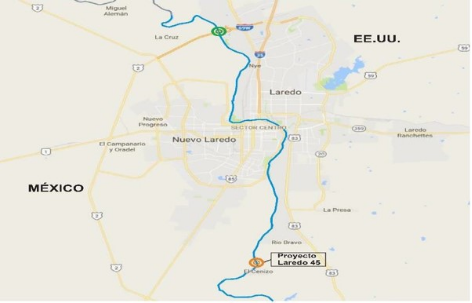
https://www.proyectosmexico.gob.mx/iniciativas-cruces_fronterizos/li-cruces-08
https://www.jornada.com.mx/2019/12/02/estados/035n5est
https://liderweb.mx/puente-45-sera-de-uso-multimodal
5. Attractions
Nuevo Laredo Cultural Center
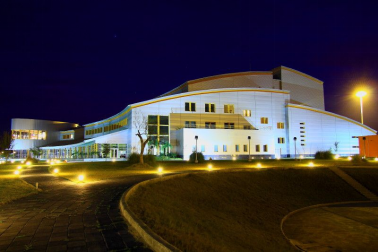
Here is the place you have to go if you want to witness some kind of event. In his theater, which seats 1,200 people, plays, concerts and dance recitals they are presented. But also has a small experimental theater that has its own events and up to 400 people. Visit the exhibitions of Reyes Meza Museum or take a tour of Uxmal walk to admire the prehispanic replicas.
The Centro Cultural (en:Cultural Center), is Nuevo Laredo's main theater. The theater has presented high level shows high level, plays, concerts and dance recitals, and has a museum, library, and a cafeteria.
https://www.triposo.com/loc/Nuevo_Laredo/culture/background
https://www.zonaturistica.com/en/things-to-do/tamaulipas/nuevo-laredo/nuevo-laredo-cultural-center
Nuevo Laredo Zoo
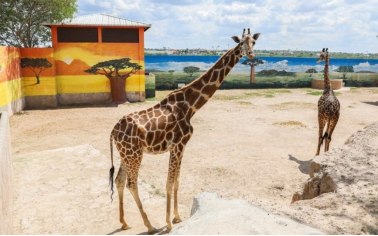
Nuevo Laredo has a great treasure, the zoo since you arrive offers you a friendly, clean and organized face not only for visitors, but also for the species that live there.
It is a space sponsored by the municipal government and mainly by the activities that the administrators themselves organize for the maintenance of this beautiful place of animal conservation.
Today, the zoo has a registry of up to 176 species and their outstanding work in caring for animals has earned them national recognition.
It opens all year round, only on Mondays it closes to do the food and necessary maintenance that cannot be done on other days of the week when there are visitors.
There are low-cost tickets for schools, religious groups and charity clubs, you just have to go to the environmental education department to organize your visit.
http://somostamaulipas.com/wp/2019/11/01/zoologico-de-nuevo-laredo-un-espacio-amigable-para-las-especies
Nuevo Laredo Natural History Museum
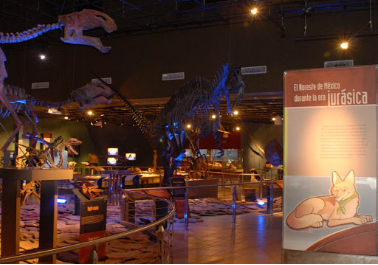
Museum located on the top floor of the cultural center is a space that allows you to walk through local history from millions of years ago to the present. It has an area where younger children can play which was recently remodeled and included the creation of a hand-painted landscape. There is a permanent exhibition of Prehistoric History to the present day, where there are replicas of dinosaur skeletons.
The Reyes Meza Museum has an 800m2 room for exhibitions of Art in painting and sculpture by artists of international stature, as well as photographic exhibitions from different periods. The Natural History Museum which has a permanent collection of history from the age of dinosaurs to the present day. The Regional Gallery of Visual Arts, which has 70m2, houses work by regional artists. The Galería Artes Actual, which has 70m2, houses works by local artists.
http://centrocultural.nld.gob.mx/#/inicio/contenido
https://sic.cultura.gob.mx/ficha.php?table=museo&table_id=1537
6. History
Nuevo Laredo is actually a recently founded city, since it constitutes the geographical part of the Mexican side of an older city, which was located on both sides of the Rio Grande, called Laredo. Laredo was founded in 1755 under the name of Villa de San Agustín de Laredo, in what was then the province of Nuevo Santander, by Tomás Sánchez de la Barrera, who by orders of the governor José de Escandón was established in the south of the province from Texas Mexicana. At that time Coahuila and Texas were merged into one state. The purpose of its foundation was to colonize the arid and remote territories of the north of New Spain. However, simultaneously the president of the United States of America James K. Polk, also had the intention of expanding the territories of that country and thus have hegemony over any European power. This would be achieved through the Monroe Doctrine of its predecessor.
The Villa of San Agustín de Laredo was named in honor of the town of Laredo, which is located in Cantabria (Spain) and in honor of San Agustín de Hipona. Due to conflicts with the central government of Mexico, Laredo temporarily separated from Mexico and formed the Republic of the Rio Grande with other peoples. The Republic of the Rio Grande was an attempt to form an independent country made up of the Mexican states of Coahuila, Nuevo León, Tamaulipas and part of the US state of Texas. This happened after the Battle of Lipantitlan, which caused Antonio López de Santa Anna to sign his independence and subsequent annexation to the U.S.A. This happened between January 17, 1840 and until November 6, 1840 due to popular discontent in the region for the regime based on the Seven Laws, exercised during the government of Anastasio Bustamante, which favored a centralist government system. The Republic of the Rio Grande was intended to be founded between the borders of the Republic of Texas and the Mexican Republic, but signed the Treaty of Velasco, Texas was separated from Mexico, not being recognized as valid by the centralist government. In this way, the government of Texas requested the help of the government of Washington to protect them in case of any aggression by Mexico, and the Americans - who were eager to seize the states to the Pacific - supported them, making them part of the American Union in 1845. This act was called the Mexican Cession, where the initial capital was the Villa de San Agustín de Laredo. In 1840, Laredo was the capital of the Republic of the Rio Grande, installed as a rebellion against the dictatorship of Antonio López de Santa Anna, it was once again Mexican territory by military force. The annexation of Texas to the United States of America in 1845 led to the war against Mexico, called the American intervention war in Mexico in behalf of the expansionist interests of the U.S.A. However, it was after the American Intervention War in which Mexico saw its territory dismembered and after establishing, in the Treaty of Guadalupe Hidalgo, the Rio Bravo as the new international border, that this population became US territory. A referendum was taken in the city, which voted overwhelmingly to request the US military government in charge of the area to return the city to Mexico. However, this request was rejected and the residents who refused to be annexed to US territory and wished to remain Mexican, crossed the River to the South bank and founded what is now the northern city of Nuevo Laredo, Tamaulipas. The city of Nuevo Laredo from its foundation until about 168 years later remained as a Mexican city until the war of 1847 arose in which by the Treaty of Guadalupe Hidalgo in February 1848, the central government ceded the northern part of the state. from Tamaulipas to the Nueces River and with this the city is divided in two, thus Nuevo Laredo arises.
The formal foundation of the current Nuevo Laredo was on May 15, 1755, since then it has been located on the banks of the Rio Grande. When Laredo and Nuevo Laredo were a city. In 1767, after the authorities of the viceroyalty of New Spain created private property in the Colonia del Nuevo Santander, later and until now known as Tamaulipas. The Villa de Laredo is designated a territory that encompasses both banks of the Rio Grande. On May 30, 1848, when the ratifications of the peace treaty were exchanged, Mexico and the United States established a new dividing line. The new border ends up dividing the sparsely populated town of San Agustín de Laredo in two. It is then when on June 15, 1848, the governor of Tamaulipas Francisco Vital Fernández addresses Andrés Martínez, the last mayor of San Agustín de Laredo, elected on the left bank of the Río Bravo, and makes him aware of the new dividing line and the mutilation of the Tamaulipas territory and therefore, the loss to Tamaulipas of the northern part of the Rio Grande from the town of Laredo and would be called Nuevo Laredo from now on.
Nuevo Laredo was implicit or virtual, as it was not a formal foundation, since there are no, or at least no documents or foundation minutes have been located. Tradition has it that the 17 families living in San Agustín de Laredo, upon learning that the Villa would be part of the United States, decided to remain Mexican and stayed in the southern part of the river. These families even unearthed their deceased to transfer and bury them in Nuevo Laredo, so that they would remain Mexican. Hence the motto of the city: "Always with the Homeland."
The era of modernization
Towards the fourteenth century of our era, the region of present-day Nuevo Laredo was occupied by the Coahuilteco Indians, who had been pushed to these lands by warrior tribes from the north; Due to the inhospitable nature of the place, they still had to dedicate themselves to gathering, hunting and fishing, and they ate mesquite pods. These tribes were culturally more backward than their northern neighbors such as the Apaches, the Lipans, and the Comanches; they liked to eat raw meat, they walked naked or covered only with a loincloth made of venison or lechuguilla. Sometimes they ate human flesh and pulverized the bones of the sacrificed to eat them with flour from the mesquite fruit. Arrowheads have been found on the roads to rancherías by the hundreds and are collectibles.
7. Other information
Medical Tourism
Medical tourists seek more affordable healthcare in Nuevo Laredo, typically United States Residents. Public healthcare in Mexico can be as low as $100, compared to the United States, which is on average $1,500, making Nuevo Laredo medical tourism costs up to 95% cheaper. On top of that, you don’t have to speak or understand Spanish in Nuevo Laredo, as English is a universal language in the world and most people in Mexico can speak fluent English.
Private health care tends to offer a higher quality than public ones. These can include less crowded hospitals, more private one on one patient time, first ones to receive up to date vaccines, medical treatments, and equipment, and shorter wait times. Medical services offered in Nuevo Laredo include bariatric surgery and plastic surgery as the most popular procedures. Also, dentistry is growing popular in the Nuevo Laredo medical tourism industry.
https://medicaltourismresourceguide.com/nuevo-laredo
8.Contact Information
City Mayor: Óscar Enrique Rivas Cuéllar
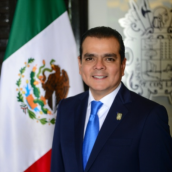
Contact number: +52 (867) 711 3500
Govt. Office Address: Calle Guerrero 1500, C.P. 88000, Nuevo Laredo, Tamaulipas
FB: https://www.facebook.com/enriquerivascuellar
Instagram: https://www.instagram.com/enriquerivascuellar
Website: https://nld.gob.mx
